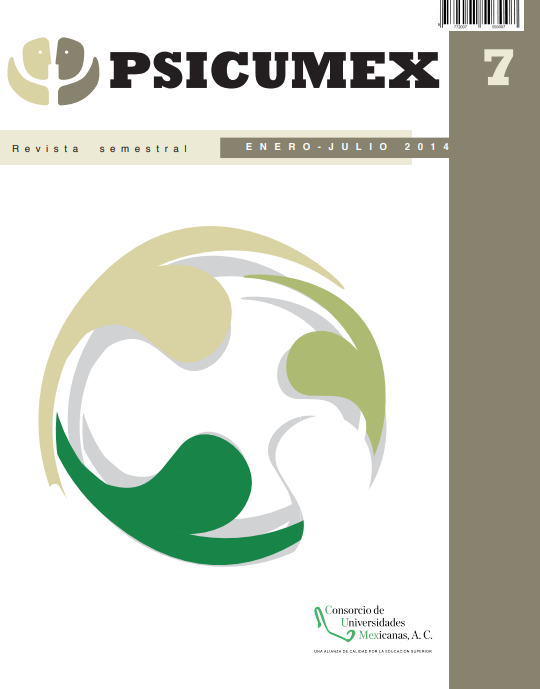Abstract
The objective of this study was to develop and test a structural model of drinking among high school students based on the results of a similar study with college students, and to analyze the differences between the results of both investigations. In a sample of 190 high school students were applied the following scales: motives for drinking (compliance, coping and social-improvement), negative expectations, problems, drinking friends, attending parties, sensation seeking and three consumption measures, which were developed and / or adapted in the undergraduate study. Subsequently, scales were validated by multiple regression analysis and a structural model of drinking was developed, which showed a good fit to the data according to accepted indexes. The resulting model showed that alcohol consumption was directly affected by the above reasons, negative expectations and assistance to parties, and indirectly by sensation seeking and drinking friends. The most notable differences between high school and undergraduate are the greatest resistance to consumer pressure group in high school and greater awareness of the risks of drinking among college students.
References
Christiansen, B. A., Goldman, M. S., & Inn, A. (1982). Development of alcohol-related expectancies in adolescents: Separating pharmacological from social-learning influences. Journal of Consulting Clinical Psychology, 50, 336-344.
Christiansen, B. A., Goldman, M. S., & Brown, S. A. (1985). The differential development of adolescent alcohol expectancies may predict adult alcoholism. Addictive Behaviors, 10, 299-306.
Cooper, M. L. (1994). Motivations for alcohol use among adolescents: Development and validation of a four-factor-model. Psychological Assessment, 6, 117-128.
Cox, W. M., & Klinger, E. (1988). A motivational model of alcohol use. Journal of Abnormal Child Psychology, 97, 168-180.
Cox, W. M., & Klinger, E. (1990). Incentive motivation, affective change, and alcohol use: A model. En W. M. Cox (Ed.), Why people drink. Parameters of alcohol as a reinforcer. (pp. 291-314). New York: Gardner Press.
Donohew, L., Hoyle, R. H., Clayton, R. R., Skinner, W. F., Colon, S. E., & Rice, R. E. (1999). Sensation seeking and drug use by adolescents and their friends: Models for marijuana and alcohol. Journal of Studies on Alcohol, 60(5), 622-631.
Earleywine, M., & Finn, P. R. (1991). Sensation seeking explains the relation between behavioral disinhibition and alcohol consumption. Addictive Behaviors, 16, 123- 128.
Ennett, S. T., & Bauman, K. E. (1991). Mediators in the Relationship Between Parental and Peer Characteristics and Beer Drinking by Early Adolescents. Journal of Applied Social Psychology, 21, 1699-1711.
Grube, J. W., & Wallack, L. (1994). Television beer advertising and drinking knowledge, beliefs and intentions among schoolchildren. American Journal of Public Health, 84, 254- 259.
Hampson, S., Severson, H., Burns, W., Slovic, P., & Fisher, K. (2001). Risk perception, personality factors and alcohol use among adolescents. Personality and Individual Differences, 30, 167-181.
Hawkins, J. D., Catalano, R. F., & Miller, J. Y. (1992). Risk and protective factors for alcohol and other drug problems in adolescence and early adulthood: Implications for substance abuse prevention. Psychological Bulletin, 112, 64-105.
Instituto Nacional de Salud Pública. Encuesta Nacional de Adicciones. (2008). México: Instituto Nacional de Salud Pública (INSP), Consejo Nacional contra las Adicciones (CO- NADIC), Instituto Nacional de Psiquiatría Ramón de la Fuente, Fundación González Río Arronte (IAP).
Jackson, C., Henriksen, L., & Dickinson, D. (1999). Alcohol-specific socialization, parenting behaviors and alcohol use by children. Journal of Studies on Alcohol, 60, 362-367.
Jacob, T., & Leonard, K. (1994). Family and peer influences in the development of alcohol abuse. En R. Zucker, G. Boyd & J. Howard (Eds.), The Development of Alcohol Problems: Exploring the biopsychosocial matrix of risk (pp. 123-155). NIAAA Research Monograph no. 26, NIH Publication no. 94- 3495. Rockville, MD: US Department of Health and Human Services.
Jaimes, C. (2000). La evolución del consumo de drogas en estudiantes del Distrito Federal. Recuperado de http://alcoholinformate.org. mx/estadisticas.cfm?articulo=3
Kuntsche, E., Knibbe, R., Gmel, G., & Engels, R. (2006). Replication and validation of the drinking motive questionnaire revised (DMQ-R, Cooper, 1994) among adolescents in Switzerland. European Addiction Research, 12, 161-168.
Mora-Ríos, J., & Natera, G. (2001). Expectativas, consumo de alcohol y problemas asociados en estudiantes universitarios de la Ciudad de México. Salud Pública de México, 43(2), 89-96.
Newcomb, M. D., & Bentler, P. M. (1986). Substance use and ethnicity: Differential impact of peer and adult models. Journal of Psychology, 120, 83-95.
Oetting, E. R., & Beauvais, F. (1986). Peer cluster theory: Drugs and the adolescent. Journal of Counseling and Development, 65, 17-22.
Oetting, E. R., & Donnermeyer, J. F. (1998). Primary socialization theory: The etiology of drug use and deviance. Substance Use & Misuse, 33(4), 995-1026.
Read, J. P., Wood M. D., Kahler, C. W., Mad- dock, J. E., & Palfai, T. P. (2003). Examining the role of drinking motives in college student alcohol use and problems. Psychology of Addictive Behaviors, 17(1), 13-23.
Riley, J. W., Jr., Marden, C. F., & Lifshitz, M. (1948). The motivational pattern of drinking based on the verbal responses of a cross-section sample of users of alcoholic beverages. Quarterly Journal of Studies on Alcohol, 9, 353-362.
Sher, K. J., Walitzer, K. S., Wood, P. K., & Brent, E. E. (1991). Characteristics of children of alcoholics: Putative risk factors, substance use and abuse, and psychopathology. Journal of Abnormal Psychology, 100, 427-448.
Van der Vorst, H., Engels, R. C. M. E., Meeus, W., Dekovic, M., & Van Leeuwe, J. (2005). The role of alcohol specific socialization in adolescents’ drinking behavior. Journal of Child Psychology and Psychiatry, 47(12), 1299-1306.
Westmaas, J., Moeller, S., & Butler, P. (2007). Validation of a measure of college students intoxicated behaviors: Associations with alcohol outcome expectancies, drinking motives and personality. Journal of American College Health, 55(4), 227-237.
Yanovitzky, I. (2006). Sensation seeking and alcohol use by collegue students: Examining multiple pathways of effects. Journal of Health Communication, 11, 269-280.

This work is licensed under a Creative Commons Attribution-NonCommercial-NoDerivatives 4.0 International License.
Copyright (c) 2014

